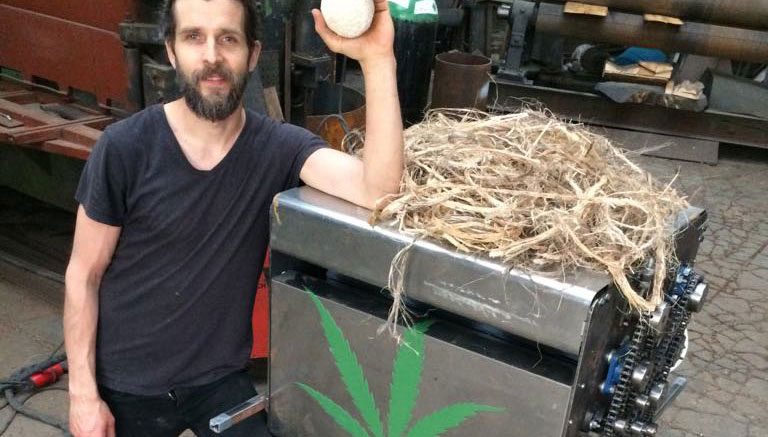
What is a Microdecorticator?
A microdecorticator is a machine used for processing hemp fibre and hurd. It is a small-scale version of the larger decortication machines used in industrial hemp processing. The microdecorticator was developed to meet the needs of small-scale farmers and processors who want to process hemp on their own without the need for expensive equipment. It has the potential to revolutionize the hemp industry by providing an affordable and efficient way to process hemp.
The Importance of Hemp as a Sustainable Resource
Hemp has been used for thousands of years for its various applications. It is a sustainable crop that requires minimal water and pesticides. Hemp is also a carbon sink, which means that it absorbs more carbon dioxide from the atmosphere than it emits. It can be used for a wide range of products, including food, textiles, paper, building materials, and fuel. Hemp is also a source of CBD, a non-psychoactive compound that has been shown to have numerous health benefits.
The Anatomy of Hemp: Understanding Fibre and Hurd
Hemp is a versatile plant that has two main parts: the fibre and the hurd. The fibre is a long, thin strand that runs the length of the plant. It is used for textiles, paper, and other products that require strength and durability. The hurd is the woody core of the plant, and it is used for building materials, animal bedding, and other products that require bulk and absorbency.



Traditional Processing Methods vs. Microdecortication
Traditional hemp processing methods involve manual labor, which can be time-consuming and inefficient. The fibre and hurd are separated by hand or with the use of a hand-operated machine. This process can be slow and can lead to inconsistent results. The microdecorticator, on the other hand, is a machine that automates the process of separating the fibre and hurd. This results in a faster and more consistent process.
The Advantages of Microdecortication for Hemp Processing
The advantages of microdecortication for hemp processing are numerous. It is a more efficient and cost-effective way to process hemp than traditional methods. It also results in a higher quality product, as the microdecorticator is able to separate the fibre and hurd more effectively than manual labor. Additionally, the microdecorticator is a scalable technology that can be used by small-scale farmers and processors as well as larger industrial operations.
How a Microdecorticator Works: A Technical Overview
A microdecorticator works by using a combination of mechanical and pneumatic processes to separate the fibre and hurd. The plant material is fed into the machine, where it is mechanically broken down into smaller pieces. It is then transported through a series of air ducts, which separate the fibre from the hurd. The fibre is collected in one container and the hurd in another. The process is automated and produces consistent results.
The Role of Microdecortication in the Hemp Industry
Microdecortication has the potential to revolutionize the hemp industry by providing an affordable and efficient way to process hemp. It allows small-scale farmers and processors to enter the market and compete with larger industrial operations. It also allows for more consistent and higher quality products to be produced, which can lead to increased demand for hemp-based products.
Microdecortication and Quality Control: Improving Product Consistency
One of the main advantages of microdecortication is its ability to improve product consistency. Traditional processing methods can lead to variability in the quality of the final product, as manual labor can result in uneven separation of the fibre and hurd. The microdecorticator, on the other hand, produces consistent results, which can lead to higher quality products and increased customer satisfaction.
The Economics of Microdecortication: Cost and ROI
The cost of a microdecorticator can vary depending on the size and complexity of the machine. However, it is generally more affordable than larger industrial decortication machines. The ROI of a microdecorticator can be significant, as it can save farmers and processors time and labor costs. It can also lead to increased revenue, as the higher quality product can command a higher price.
Scaling Up: Microdecortication for Industrial Hemp Operations
Microdecortication is a scalable technology that can be used by both small-scale farmers and larger industrial operations. For larger operations, multiple microdecorticators can be used to increase processing capacity. This allows for more efficient and cost-effective processing of hemp, which can help to increase the profitability of the operation.
Challenges and Limitations of Microdecortication
One of the main challenges of microdecortication is the need for proper maintenance and upkeep of the machine. It is also important to ensure that the machine is operated correctly to prevent damage to the machine or the product. Additionally, microdecortication may not be suitable for all types of hemp, as some varieties may require different processing methods.
The Future of Microdecortication in Hemp Processing
The future of microdecortication in hemp processing is bright. As the demand for hemp-based products continues to grow, the need for efficient and cost-effective processing methods will increase. Microdecortication has the potential to meet this need and revolutionize the hemp industry. With continued research and development, the technology will likely continue to improve and become even more effective and efficient.















